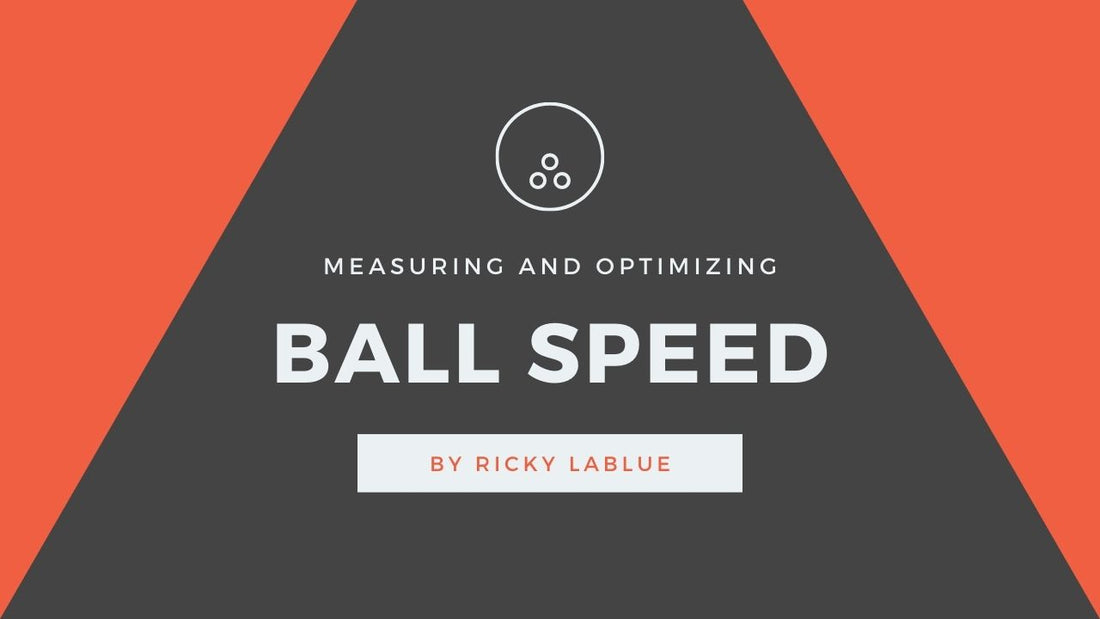In your return to the lanes, you might’ve noticed that you’re probably throwing the ball a bit slower than normal. Perhaps you’re used to throwing the ball around 17-18 miles per hour, but you’ve since dropped to around 16.
Restoring your ball speed to a consistent standard is an important part of repeating shots. It’s nearly impossible to hit the same mark on the lanes, and see a consistent ball reaction, without consistent ball speed.
Measuring ball speed
If you watch a PBA event, you’ll notice that professionals often throw the ball anywhere from 18-20 miles per hour. Part of this is because professionals throw the ball harder than the average bowler, but the ball speed is also measured at a different point on the lane.
On PBA televised shows, ball speed is measured at the front part of the lane. When you’re bowling your normal league or tournament, your ball speed is measured in the latter third of the lane, after it has had time to slow down. So ignore the speed you see on TV, and focus on your game.
The average ball speed for your normal bowler is around 16-17 miles per hour. If you’re of bigger stature, it’s normal for you to fall above that mark. For smaller or older bowlers, you’ll likely fall below that range. Both of these are okay.
Where ball speed comes from
Contrary to some, you don’t generate ball speed by accelerating downward in your approach. Forcing the release and trying to add extra ball speed by throwing it harder is not the answer.
Ball speed comes from two places — the height of your ball at the beginning of the approach and the length of your steps.
Raising or lowering the ball at the start of your approach is the easiest way to change your ball speed. Raising the ball will raise your backswing, thus giving the ball more time to generate momentum before your release it. Lowering the ball has the opposite effect, as it lowers the height of your backswing and gives the ball less momentum at the point of release.
When you make an adjustment to the height of the ball at the starting point, you will need to match that adjustment by moving forwards or backwards on the approach.
Elevating your backswing will lengthen the time needed for it to reach the bottom of the swing. Moving back on the approach gives the ball enough time to meet your feet at the foul line, so that your feet and the ball are in time at the point of release. Lowering the backswing means your feet need to come closer to the line.
Finding the right speed
Walk to the foul line and turn around, facing the concourse of your bowling center. Then take four or five steps towards the concourse, depending on how many steps your approach normally is. Then take another half step and turn around. That is roughly where you should stand at the start of your approach.
After that, move the ball higher or lower at the start of your approach in order to find the optimal starting point. The result is your ideal ball speed, and you should base your game off of this speed.
If you find that your feet are moving too fast and that the ball is getting to the line later than your body, lower the ball at your starting point and work from there. If you notice the ball is reaching the line sooner than your body, make the opposite adjustment. You will face the former of those issues more often.
Be who you are
It’s important to fine tune your game and try to optimize it, but it’s also important to accept the style of player you are and not shy away from it. Don’t try to throw the ball harder than you’re comfortable with because you see some other bowlers having success with it. The same goes for those who are looking to hook more of the lane and thus try to slow their ball speed.
Accept who you are and build your game off of that. There is a difference between being versatile and trying to be someone you aren’t. Once you find a baseline approach and shot that you’re comfortable with, adjust off of that. But never forget what kind of bowler you are, and don’t be jealous of those who you aren’t.

